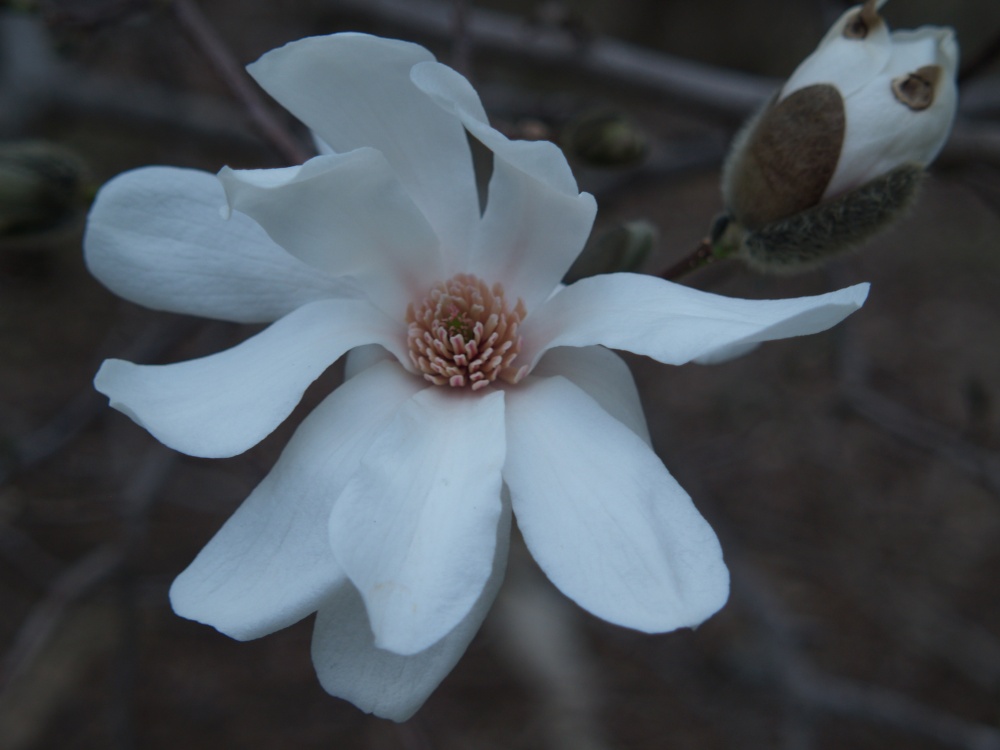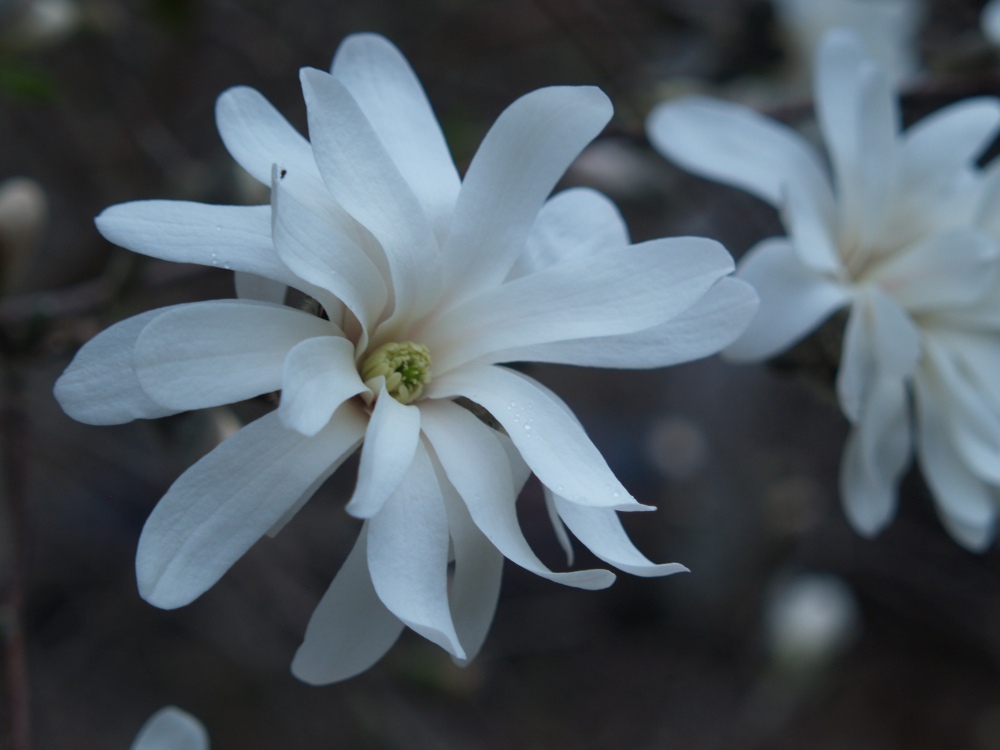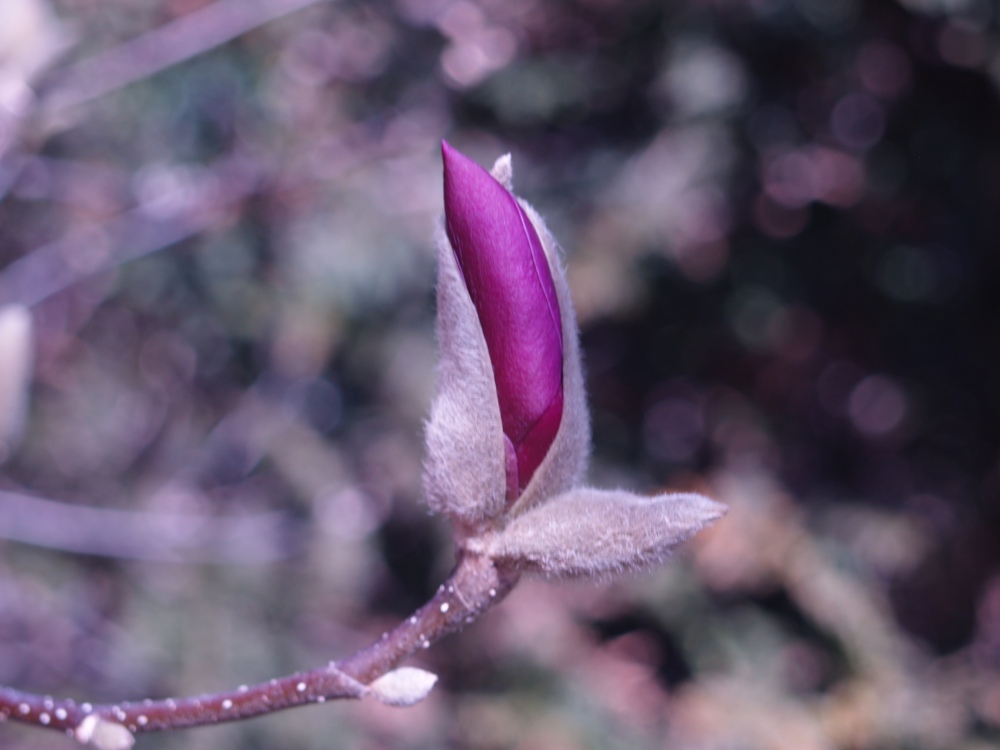Yes, spring is here, though today is quite cool and cloudy and I will not be dragged outdoors this evening for any reason. Now, the spring peepers are much quieter than on a sunny afternoon when I wonder if they number in the hundreds, or many more.

The photo above is most definitely not a peeper, but a bullfrog scooped out of the front pond while cleaning out leaves over the weekend. He was not enthused at all by my presence, and as soon as my wife and son ceased fussing over him, he disappeared, I suppose back into the pond. A few smaller frogs pulled out of the pond seemed more cheerful than this grumpy old fellow, but all readily hopped back into the chilly water.

Many years in late winter the gardener is concerned that flowers of ‘Dr. Merrill’ (Magnolia × loebneri ‘Merrill’, above) and ‘Royal Star’ magnolias (Magnolia stellata ‘Royal Star’, below) might be injured by freezes and frosts that are common in late February and early March. This year the buds did not begin to crack open until the last week of March, and the first fully opened flowers were delayed until yesterday. Only a third of the buds have opened, but with warm temperatures on the weekend I expect both magnolias will reach full bloom.

I have not seen other ‘Dr. Merrill’ magnolias nearby for comparison since it is not planted much any longer while late flowering hybrids such as ‘Jane’ are more favored, but typically it flowers several days earlier than ‘Royal Star’. This is most often the first week of March, though it can vary a week or so in either direction. It is unusual, and I’m certain I don’t recall a year when the flowers were delayed until April. Surely, the blooms will not be threatened by cold this late.

A few flowers on ‘Jane’ are beginning to show some color as the buds open, and buds of the pale yellow ‘Elizabeth’ are noticeably swelling, so flowers on all might overlap at some point next week. The redbuds are due to flower any day, and dogwood buds are plump and ready to burst open with several days of warmth. While the tardy blooms of ‘Dr. Merrill’ and ‘Royal Star’ were missed a month earlier, that was then and today there are no complaints.
Thank you again for your delightful column.
All the magnolias are fantastic. Even with a freeze wiping out the early ones here and there over the years I would still plant them for that one glorious season when they’re perfect.
The early flowering magnolias are damaged infrequently enough in late winter freezes that it’s not a bother to me. Like you, I’d plant them again, but I also want the later blooming varieties, so I’ve planted them also.